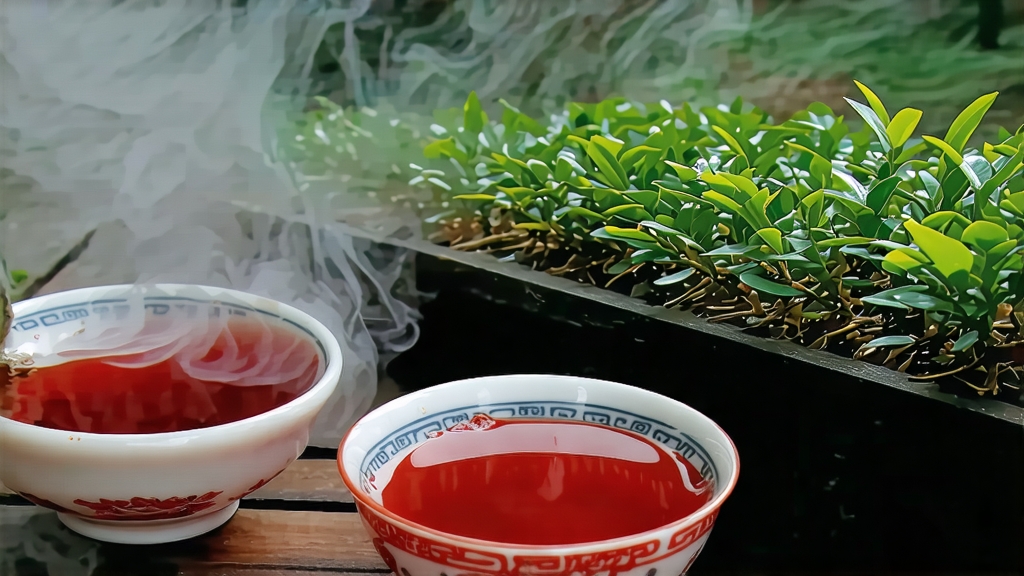
Long before Assam, Ceylon, or Earl Grey ever filled an English cup, a small village in the Wuyi range of Fujian province was already sending smoky, malty black leaves down the Nine-Dragon River to the port of Xiamen. Those leaves—called Lapsang Souchong—were the first black tea the world ever tasted, and they remain the most polarizing, misunderstood, and seductive member of the Chinese red-tea family. To international palates raised on breakfast blends, the very word “Lapsang” conjures campfire in a cup; to Chinese gourmets it evokes honeyed longan, dried lychee, and the cool resinous air of high bamboo forests. Both images are true, because Lapsang Souchong is not a single tea but a spectrum of craft, history, and micro-climate that begins in the same rocky gorges that birthed Da Hong Pao oolong.
Historical records from the late Ming dynasty (c. 1604) mention “Xiaozhong red” being bartered by the Dutch East India Company for silver and spices. The term xiaozhong—literally “small variety”—distinguished the local tea bush from the larger-leafed Daye cultivars grown on the plains. When the Qing opened the Canton System in 1684, Lapsang Souchong became the template for every subsequent black tea: withered, rolled, oxidized, and dried. European merchants shortened “Xiaozhong” to “Souchong,” and the prefix “Lapsang” (from the village name Lapu Mountain) stuck in the West. Thus a humble Fujianese village gave its name to an entire category, the way Champagne later would for sparkling wine.
Today the protected origin zone centers on Tongmu Guan, a narrow pass at 1,200 m where the Min River cuts through granite peaks. Here the average humidity hovers at 85 %, fog drifts till noon, and the soil is a sandy laterite laced with crushed volcanic tuff—conditions that stress the tea bushes (predominantly the small-leafed Caicha cultivar) into producing more aromatic oils. Within Tongmu Guan the tea is further classified by elevation and smoking protocol: Zhengshan Xiaozhong (unsmoked “original mountain” lots), Wuyi Xiaozhong (lightly smoked), and the classic Lapsang Souchong (traditionally smoked over Masson pine). Each grade is harvested at different solar terms: Mingqian buds for the sweetest, pre-rain leaves for the most balanced, and Guyu seasonals for the boldest smoke.
Craft begins the moment two leaves and a bud are plucked before 9 a.m. The leaves are spread on bamboo trays inside a three-hundred-year-old cedar loft where mountain breezes perform a slow withering (8–10 h) that reduces moisture to 60 %. Oxidation follows in waist-high wooden drums lined with wet cloth; artisans roll the leaves by foot every 30 min to bruise cell walls evenly, turning the leaf edge a coppery red while the vein remains green. The critical step is the pine-smoke firing. Local Masson pine roots, rich in resin, are burned in an earthen pit beneath iron woks; the fresh tea is placed on bamboo sieves two meters above, absorbing smoke for 6–8 h at 70 °C. Masters judge readiness by aroma alone: the moment sharp tar softens into candied fruit, the leaves are rushed to a cooling room where residual moisture equalizes. Unsmoked versions skip the pine fire and are instead baked over charcoal made from local oak, yielding a liquor closer to dried apricot than bacon.
To brew Lapsang Souchong gongfu style, use a 120 ml porcelain gaiwan and 5 g of long, wiry leaves. Rinse once with 95 °C water to awaken the leaf, discard immediately. First infusion: 10 s, focusing on the rising vapor—note how the smoke hovers above deeper notes of cacao and rose. Second infusion: 8 s, the cup edges turn bright copper; sweetness now dominates, like burnt honey on toast. Third infusion: 12 s, the smoke recedes to reveal a mineral core reminiscent of Wuyi rock oolong. Continue for eight infusions, adding 3 s each time; the liquor remains